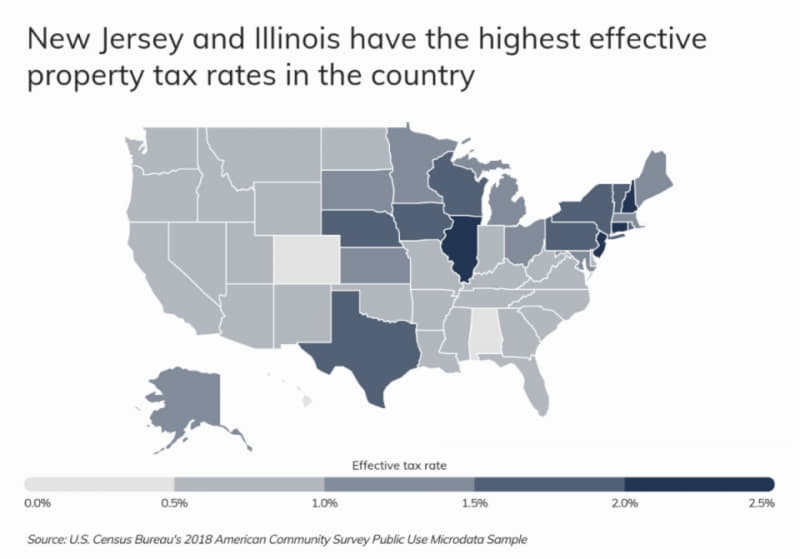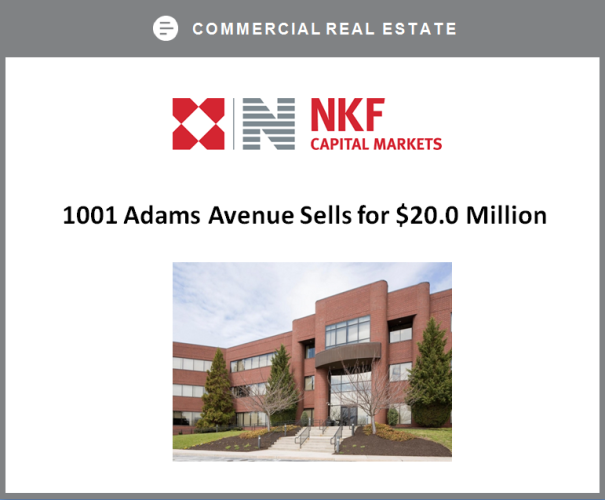Depending on local tax rates and home values, property taxes can account for a substantial portion of housing costs. According to the latest data from the U.S. Census Bureau, the median annual property tax paid by homeowners was $2,578 in 2019, or 1.03 percent of home value, but many households pay far more than this. Further, beginning in 2018, the SALT tax cap began limiting the amount of state and local taxes that could be deducted against federal income taxes. Consequently, living in a high-tax state has become increasingly more expensive.
Census Bureau data shows that in aggregate, property taxes are the biggest source of tax revenue for state and local governments. Nationally, state and local property taxes totaled $617 billion in 2019, or 39 percent of total state and local government tax revenue. Property tax revenue amounted to $159 billion more than the next largest state and local government tax revenue source, individual income taxes.

Property tax rates vary widely by location, making some parts of the U.S. far more expensive to live. While property taxes are levied in different ways based on local and state laws, a helpful way to compare tax burdens across locations is to calculate an effective property tax rate by dividing the total property taxes paid by the aggregate value of homes in a given area.
At the state level, Americans living in New Jersey and Illinois tend to pay the most in property taxes relative to home values. These states have the highest effective property tax rates, at 2.42 and 2.16 percent, respectively. On the other hand, people living in Hawaii and Alabama have much lower property tax bills, with effective property tax rates of 0.40 and 0.28 percent. While the total amount of property tax paid is a function of both tax rates and home values, residents in states with high effective property tax rates also tend to pay the most in absolute terms. For example, the typical New Jersey homeowner paid an astonishing $8,432 in property taxes last year, the highest in the country.

To determine the cities with the highest and lowest property taxes, researchers at Roofstock analyzed the latest housing data from the U.S. Census Bureau. Cities were ranked according to their effective property tax rate, measured as aggregate real estate taxes paid divided by the aggregate value of homes. Researchers also calculated median property taxes paid, median home value, and median household income for owner-occupied homes.
To improve relevance, only cities with at least 100,000 people were included in the analysis. Additionally, cities were grouped into cohorts based on population size. In the report, small cities have 100,000–149,999 residents, midsize cities have 150,000–349,999 residents, and large cities have at least 350,000 residents.
The analysis found that Philadelphia has an effective property tax rate of 0.93%, which is lower than the national median of 1.03%. Here is a summary of the data for Philadelphia, PA:
- Effective property tax rate: 0.93%
- Median property taxes paid: $1,664
- Median home value: $183,200
- Median household income (owner-occupied homes): $61,162
For reference, here are the statistics for the entire United States:
- Effective property tax rate: 1.03%
- Median property taxes paid: $2,578
- Median home value: $240,500
- Median household income (owner-occupied homes): $81,988
For more information, a detailed methodology, and complete results, you can find the original report on Roofstock’s website: https://learn.roofstock.com/






